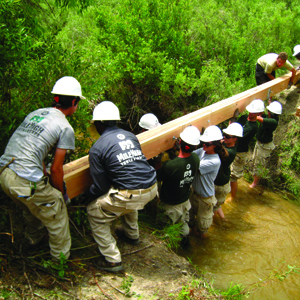 On a frigid February day in Boston, hundreds of young people backed by Mayor Thomas Menino rallied outside the statehouse for increased funding for summer jobs. Only about one in four teenagers in Massachusetts held a job last summer, rally organizers told the Associated Press. Twelve summers ago, more than half of all teens in the state worked.
On a frigid February day in Boston, hundreds of young people backed by Mayor Thomas Menino rallied outside the statehouse for increased funding for summer jobs. Only about one in four teenagers in Massachusetts held a job last summer, rally organizers told the Associated Press. Twelve summers ago, more than half of all teens in the state worked.
The decline in summer job opportunities is not unique to Massachusetts. Across the United States, the summer employment rate for 16- to 19-year-olds fell from 51.7 percent in 2000 to about 33 percent in 2012, according to the Bureau of Labor Statistics. Summer programs, especially ones that provide work experience, help young people expand their experiences, learn new skills and forge new relationships with peers, adults and potential employers.
Like the young people who marched on Beacon Street, youth-serving organizations must draw upon their state and local governments and create partnerships with private businesses and nonprofit groups if they want to create summer jobs for their clients, according to several jobs corps leaders and city officials.
Washington, after all, has other concerns. Partisan fights over immigration and gun control, ongoing budget squabbles, and a vacancy at the top of the U.S. Department of Labor, could mean that the reauthorization of the federal Workforce Investment Act of 1998 remains a distant dream. Such a reauthorization, which is now 10 years overdue, should strengthen the way youth employment programs are funded, according to the National Conference of State Legislatures.
In the absence of federal leadership, youth program leaders say connecting young people with summer work requires the help of entire communities — including state workforce investment boards, the mayor’s office, city agencies, and local businesses and community organizations.
Older faces behind counter
For many teenagers, a job during summer break provides a first chance to learn how to behave in a workplace. Students learn critical skills, both interpersonal and technical, stay off the streets, and earn disposable income that they then spend in the local economy.
Working during the summer also keeps young people engaged in learning while they are out of school. According to a report by the Afterschool Alliance, young people who participate in non-academic summer programs are more likely to earn higher grades during the next school year, while those who don’t participate risk losing the academic and social gains they made during the last school year.
But at 23 percent in January, the national unemployment rate for teenagers is the highest of any major worker demographic, according to the Bureau of Labor Statistics. In fact, nearly 6.5 million people between the ages of 16 and 24 are both unemployed and not in school, according to the Annie E. Casey Foundation’s December 2012 KIDS COUNT report.
That’s a lot of young people who are disconnected from productive work and who make up the future labor force of the country, said Mary Ellen Ardouny, the president and CEO of the conservation-minded Corps Network, a national youth development coalition. “If we don’t do something to re-engage them, they’ll continue to be a drain on taxpayers and society,” she said.
Summer employment rates for teenagers have been declining since 2000 for a number of reasons: a rise in summer school enrollment, an earlier start to the school year in many districts, an increase in unpaid internships, rising federal and state minimum wages, and a decrease in the number of federally funded summer jobs, according to a 2010 analysis by the U.S. Labor Department.
But high unemployment rates in the general population and the sputtering economy have also contributed to the high teen jobless rate, analysts say: When part-time jobs do open up, unemployed adults who have significant work experience compete for those positions against teenagers with little to no experience. The adult workers are more likely to get hired.
Federal funds are scarce
The federal government funded a summer jobs training program for low-income youth from 1982 to 2000, when the Workforce Investment Act (WIA) ended dedicated federal funding for summer jobs programs, said Mala Thakur, the executive director of the National Youth Employment Coalition.
In 2009, Congress passed the American Recovery and Reinvestment Act: the first time in nine years that the federal government allocated funds for summer jobs programs for youth. But that $1.2 billion in stimulus money was finite and gone in a couple of years.
“Of the nearly $6 billion allocated in the 2012 federal budget for U.S. Department of Labor employment programs, very little is targeted to serve out-of-school, disconnected youth,” the KIDS COUNT report found. “Public funding is generally fragmented and often aimed at adults, rather than at young people building skills to move into the workforce.”
Workforce Investment Act funds for youth programs have been declining in recent years, and their fate is even more uncertain with the current handwringing in Washington over the federal budget.
WIA funds are not enough. “The $824 million in federal support for youth employment programs — the principal resource for disconnected youth — has never come close to meeting the need,” the KIDS COUNT report said.






























